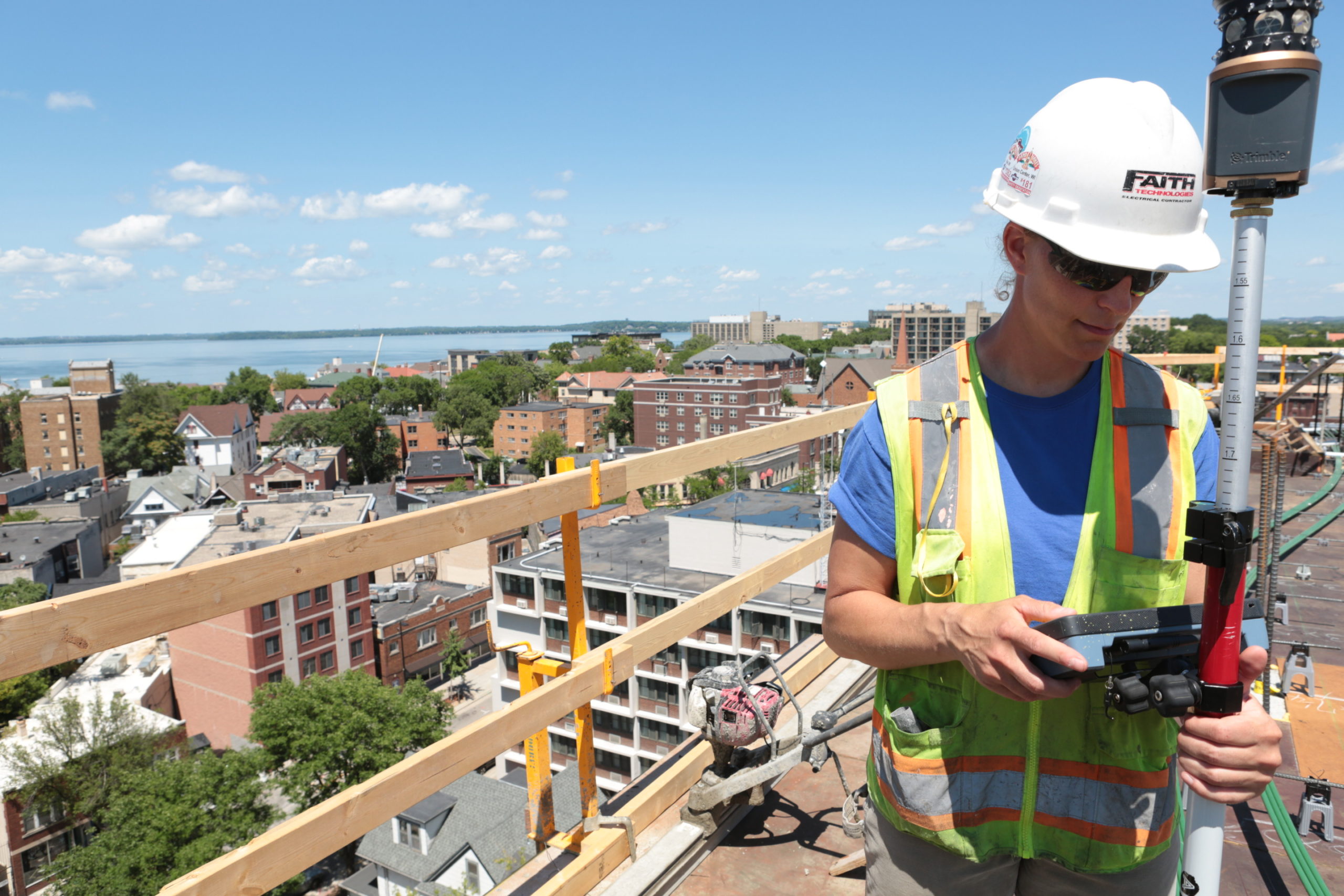04.26.2017
Keeping Workers Safe Through the DFCS Concept
 Designing for Construction Safety (DFCS), also known as Prevention through Design (PtD), is a concept that encourages architects and design engineers to consider the safety of construction and maintenance workers during the design phase of a project. It could be as simple as providing a parapet wall that’s high enough to provide fall protection for workers, designing anchor points in areas where workers are exposed to a potential fall, or ensuring that light fixtures are installed in areas where they can be easily accessed.
Designing for Construction Safety (DFCS), also known as Prevention through Design (PtD), is a concept that encourages architects and design engineers to consider the safety of construction and maintenance workers during the design phase of a project. It could be as simple as providing a parapet wall that’s high enough to provide fall protection for workers, designing anchor points in areas where workers are exposed to a potential fall, or ensuring that light fixtures are installed in areas where they can be easily accessed.
This is not a new concept; in fact, it’s been required in the United Kingdom for more than two decades, and other countries require or highly encourage it. Here in the US, the concept has also been gaining momentum in recent years. OSHA’s Alliance Program Construction Roundtable continues to focus on the development of DFCS-related outreach and training products, including a short course which provides employers, contractors, owners, design engineers, and architects with information on how to recognize and anticipate construction hazards, and how to eliminate them with well thought out construction design features. This group also developed construction workplace design solutions geared toward the prevention of falls in the construction industry.
Commitment to the concept of DFCS has been seen at the federal government level, but much more needs to be demonstrated by other stakeholders such as owners, contractors, design engineers and architects. Some concerns regarding DFCS that have been raised by design engineers and architects include:
- Exposure to potential lawsuits from injured workers
- Increased costs associated with insurance premiums
- Direct and overhead costs for designers
- Lack of safety expertise on the part of designers
There have also been reports of owners refusing to allow high parapet walls in their building designs because they will alter the look of their buildings. Some of these concerns may be legitimate, but they pale in comparison to the thousands of injuries and fatalities that occur every year on construction sites that could have been prevented by appropriate design measures, as well as the billions of dollars employers incur each year due to direct and indirect costs of injuries.
At Faith Technologies, we understand the role that DFCS plays in eliminating unnecessary hazards to our workers, and our safety and engineering/design departments are in partnership to bring the concept of DFCS into our design-build projects. This calls for coordination at the design phase of every project, where unnecessary hazards are eliminated and safety considerations are made. Such considerations include limiting the depths of excavations to four feet or less where possible to eliminate cave-in hazards, prefabbing fixtures in controlled environments, installing lights at locations with easy access, providing parapet walls or anchor points for fall protection, and installing sleeves instead of core drilling holes. These are meaningful solutions that have been brought to our design-build projects to enhance the safety of our workers.
It’s no secret that the construction industry remains one of the most hazardous in which to work. However, many of these hazards could be eliminated at the source by implementing reasonable design for safety concepts, which have proven to work. It will take the continued efforts of all involved to embrace this concept and help prevent the injuries and deaths occurring on construction projects. Is your team on board?
If you enjoyed this blog article, please subscribe to stay up to date on the latest industry news from our experts at Faith Technologies.




